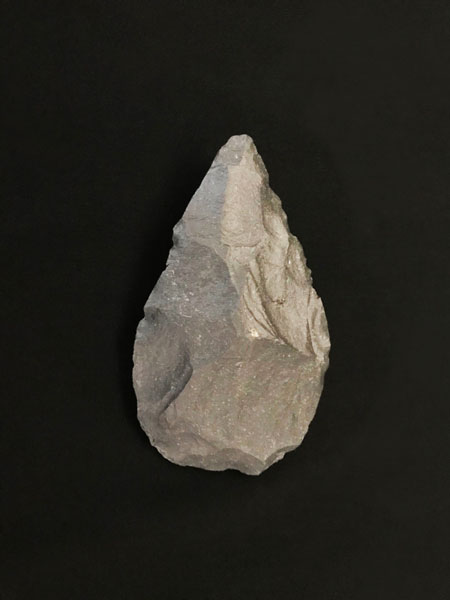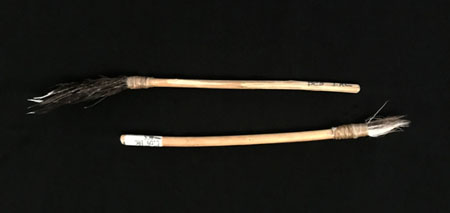Three copies of the Ancient India kit are available for checkout. Each kit is one complete unit, adaptable for grades 3 to 8. Included in the kit are integrated lessons outlined in the teacher's guide, images, and artifacts that have been carefully selected to acquaint students with primary sources. Below are some images and labels about some of the artifacts in this kit.
Flint tools
Each kit has a hand-axe and one additional flint tool. The hand-axe emerged about 1.5 million years ago (mya) during the time of Homo erectus. This tool was first used to dig up edible roots and tubers. As a more refined tool, it was used for skinning and cutting up game. It was made by first using another stone to trim it into the rough shape. Next, a stone hammer was used to make sharp blows along the edge thus removing a large chip from the underside. Finally a light bone napper was used to trim the ax by striking it along the edge and chipping off smaller and thinner pieces of stone. Click on the following link to see a short video about flintknapping: Time Team America: Flintknapping(opens in new window)

Fire Drill and Hearth
This simple tool shows the basic principle of generating heat by turning the drill to create friction so the wood underneath begins to burn. The larger piece is the hearth. Earliest fire makers rotated the drill, igniting the tinder which was added to a heap of dry grass and sticks. Once the fire was started, larger pieces of wood were added.

Brushes
Brushes were made of various materials, such as wood fiber, animal hair, and feathers.
- Feather Paint Brush: Turkey feathers have been bound to the stick handle with animal tendon
- Deer Hair Paint Brush: Hair from deer tails have been fastened to the handle of the brush with animal tendon

